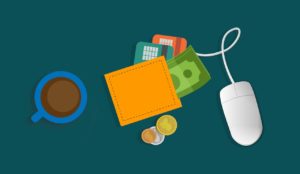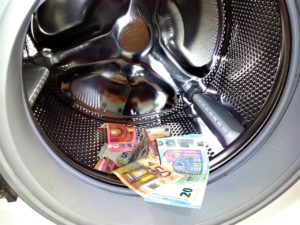Wuhan virus, coronavirus or, as it is officially called, Covid-19, whatever you call it, we all know what we mean: the invisible creature that has turned the whole world upside down in recent months and does not seem to want to leave. How dramatically the world has changed in that short time. Many are calling what has happened The Great Lockdown. The current crisis is like no other, it is unlike anything experienced in our lifetimes—and with that, there is substantial uncertainty about its impact on people’s lives and livelihoods now, and in the future.
 Countries are facing multiple crises simultaneously: a health crisis, a financial crisis, an employment crisis and a collapse in commodity prices, to name only the major ones, and they are interacting in complex ways. With global growth for 2020 projected to fall to -3 percent, the International Monetary Fund is calling this the worst economic downturn since The Great Depression. The International Labor Organization estimates 6.7 per cent of working hours, or 195 million full-time jobs, will be lost worldwide in the second quarter of the year—compared to the Global Financial Crisis of 2008-2009, when something like 22 million jobs around the world were lost.
Countries are facing multiple crises simultaneously: a health crisis, a financial crisis, an employment crisis and a collapse in commodity prices, to name only the major ones, and they are interacting in complex ways. With global growth for 2020 projected to fall to -3 percent, the International Monetary Fund is calling this the worst economic downturn since The Great Depression. The International Labor Organization estimates 6.7 per cent of working hours, or 195 million full-time jobs, will be lost worldwide in the second quarter of the year—compared to the Global Financial Crisis of 2008-2009, when something like 22 million jobs around the world were lost.
Countries around the world are struggling, but so are financial institutions: they are facing compliance challenges linked to the pandemic. While people are desperate and governments are trying to deal with the multiple crises, criminals are in many cases shamelessly taking advantage of the situation, and new trends are emerging amongst these groups. The coronavirus has caused widespread disruption in financial markets—in which criminals see new opportunities to generate and launder illegal funds. Some of these new patterns are really unique to the coronavirus, and some can be associated with times in history where uncertainty has taken the lead. In fact, the Financial Crimes Enforcement Network (FinCEN) has made a connection between these patterns and those that occur in relation to natural disasters.
In either case, financial institutions need to keep their eyes open and keep up with the ways criminals are exploiting the pandemic—and how their compliance processes may need to change to manage these new threats.
The extra challenge: online services
Before digging into the minds of the criminals, we need to take a detour to discuss some important impacts Covid-19 has had on the financial world. As a result of the strict measures many countries have introduced, e.g. restricting movement and even introducing very strict quarantines, people are turning to online services in order to maintain control of their finances and funds . It is very interesting to observe the tendencies arising, such as the influx of people using virtual currencies or turning to mobile apps and digital banking to avoid having to go to the bank in person—which they may not even have the option of doing. The speed of digitalization has increased as never before.
 One of the issues, however, is that many of these new consumers, especially the elderly—those, who are affected most by the virus—have never used digital banking services in the past, and are not accustomed to them. This lack of knowledge and experience can clearly be easily exploited by criminals. This tendency also widens the target groups of these services and increases the number of people using them. That, along with the increased number of cash withdrawals and cryptocurrency transactions, is putting a huge burden on the AML/CTF compliance team of every financial institution involved, because the increased volume of transaction data and the decreasing average level of knowledge among informed customers is making it more difficult for them to differentiate between legal and potentially illegal activities.
One of the issues, however, is that many of these new consumers, especially the elderly—those, who are affected most by the virus—have never used digital banking services in the past, and are not accustomed to them. This lack of knowledge and experience can clearly be easily exploited by criminals. This tendency also widens the target groups of these services and increases the number of people using them. That, along with the increased number of cash withdrawals and cryptocurrency transactions, is putting a huge burden on the AML/CTF compliance team of every financial institution involved, because the increased volume of transaction data and the decreasing average level of knowledge among informed customers is making it more difficult for them to differentiate between legal and potentially illegal activities.
Furthermore, as financial institutions have themselves recommended their clients to conduct their transactions and take care of other matters through non-face-to-face instruments, even in parts of the world where strict quarantines are not in place, these institutions in any case need to change their AML processes. These transactions are inherently considered more risky from an AML/CTF perspective than face-to-face transactions. Some financial institutions weren’t ready to handle all these transactions and had, or in some cases, still have loopholes in their processes, which makes it a lot easier for criminals to exploit the new situation.
How Covid-19 is changing financial crime: patterns in the criminal world
In addition to the change in customer habits, the behavior of criminals is changing as well. Fraudsters are not slow to take advantage of chaos and the fear and indeed use it to sell fake cures, impersonate government officials to elicit money from people, or even fund fake charities. Even though the opportunities are essentially endless, there are a few patterns and emerging trends that can be seen in the criminal world. 
Investment scams are not new, such scams are how fraudsters try to convince people to part with their money through the offer of above-average levels of return at what appears to be minimal risk. What is new in this area of crime is how the scammers are using the latest Covid-19 related news to lure investors in. They will often claim on social media or via other online promotions that the products or services of chosen publicly traded companies can prevent, detect or cure coronavirus. They claim that for this reason: the stock of these companies will dramatically increase in value. While obviously most of these promotions are bogus, many have already fallen victim to these types of crimes.
As mentioned before, criminals enjoy playing on people’s fear and gullibility. Some bad actors are attempting—and succeeding to some extent—to impersonate government agencies, international organizations (such as the World Health Organization, WHO) or healthcare organizations in order to solicit donations, steal personal information or distribute malware. WHO has already issued a warning about these criminals impersonating them, taking advantage of Covid-19 and of stealing information using malicious links or attachments. A side-note conclusion: cybersecurity has never been more important.
We probably do not even need to mention product scams. We have all heard stories about fraudulent marketing of Covid-19-related supplies or face mask scams, one of which took a joint action from Interpol, Europol and several national authorities to uncover. Some sellers are even selling unapproved or misbranded products, or are making false health claims in relation to Covid-19. This just shows how not only individuals, but whole companies are unabashed in taking advantage of the fear surrounding coronavirus.
 While the above criminal patterns and trends are not money laundering per se, financial institutions still need to be aware of them, and pay attention to the source of any funds they accept—as all money arising from the above behaviors is coming from criminal activities, therefore, using or attempting to use any of this illegally obtained money will by definition constitute money laundering.
While the above criminal patterns and trends are not money laundering per se, financial institutions still need to be aware of them, and pay attention to the source of any funds they accept—as all money arising from the above behaviors is coming from criminal activities, therefore, using or attempting to use any of this illegally obtained money will by definition constitute money laundering.
There is an additional emerging trend, however, that is in fact used for purposes no other than money laundering: since the coronavirus outbreak, there has been an increase in money mule crime. It’s a type of money laundering that utilizes ‘money mules’ to transform illegal funds. Money mules are people who are hired to deposit criminal proceeds into bank accounts under the guise of ordinary financial activity. Before coronavirus arrived, criminal groups typically recruited people who were aware of the fact that they were moving illicit funds. In this scenario, banks with sufficient due diligence measures could detect that something was wrong. With the millions of jobs being lost however, people are now desperate to take any work that comes to them—this is what money launderers are taking advantage of. The money mules of the Covid-19 era are mostly people who are recruited by criminals, and are basically dragged into money laundering schemes under the pretense of legitimate employment. Criminal groups use fake job ads or social media posts to gather new recruits, honest people following the letter of the law, who have already been classified as low or medium risk customers by their bank. Even though it’s wrong, it’s perfectly understandable why money launderers prefer these people: lower-risk customers who are unaware of the fact that they are money mules.
Furthermore, within the context of coronavirus, criminals are exploiting legitimate health concerns, potentially posing as a health organization, claiming the money handled by the money mules are donations from generous individuals. There’s usually also the added twist of using cryptocurrencies, to make transactions less traceable, and irreversible. The money mules receive money to their personal bank account—the donation. They are asked to withdraw the funds as cash, keep some of it as their commission, and then deposit the cash at a Bitcoin ATM, sending it to the wallet address of the money launderers, via irreversible transactions. Some schemes, such as this one, even give other menial tasks to their fake employees to avoid them getting suspicious and sort through the candidates, picking the ones who would take the jobs seriously. It seems like the perfect crime, with no means to detect it…
Adjusting AML/CTF processes
With all these new patterns, seemingly undetectable money mules and the increased risk of money laundering, what can financial institutions do to stay compliant, keep their processes up-to-date and detect suspicious activities? While the struggle is real, there are ways for you to adjust your processes.
One great way to do so is to adjust your adverse media screening to capture categories of news that indicate potential crimes or money laundering activities. You should pay attention to the following as examples:
- Violence, human rights abuse. This category covers stories that involve violent actions, assault, sex offenses or even on a higher, state-level, human rights offences.
- Regulation, enforcement. By this category, we mean media stories covering disciplinary, regulatory actions taken, and fines imposed by authorities against certain firms.
- Criminality. You should also pay attention to stories about different kinds of financial criminality, such as predatory lending or accounting malpractice.
- Financial difficulty, meaning stories that involve significant debt, bankruptcy, large-scale lay-offs or departure of high-level staff. This is a category you need to pay particular attention to, because firms that enter financial difficulties can be extremely vulnerable to money launderers seeking opportunities for leverage, or looking for gaps in compliance.

Based on the above-mentioned typologies and the ones that you may uncover in your practice, you should change rule-sets and include new ones to make sure that your screening and transaction monitoring processes are able to detect and capture the newly emerging suspicious activities.
As for the unsuspecting money mules, here are few tips you can use to make sure you catch them—it’s actually not impossible!
An unexpected impact on some financial institutions
There is something in the new world order that affects financial institutions that possibly no one has thought about. Certain countries, such as the United Kingdom, are taking the “all-crimes approach” toward money laundering. This approach broadly defines money laundering, and essentially means that the severity and type of the crime does not matter: if there is a suspicion that a transaction or activity might involve funds arising from any criminal activity, it needs to be reported.
While this approach is already a huge burden on financial institutions in times of peace, imagine what happens now, when due to the restrictions, there is a new crime category: running non-compliant businesses, and dealing with their proceeds. To stay in the UK, because of the Covid-19-related restrictions, anyone who runs a restaurant, bar, pub, etc. and continues to sell foods and/or drinks on the premises is now committing a crime or an offence under emergency regulations. The same with other listed businesses, such as non-remote retail. The revenue arising from conducting these otherwise legitimate activities shall now be considered as coming from criminal activity. Subsequently this means that anything they do with such funds later on, shall be viewed as money laundering if we want to be consequent with the laws.
So far we are in unfamiliar territory and there is no guidance as to what this means to businesses in the regulated sector that are supposed to detect and report money laundering. Our educated guess is that it is a nearly impossible burden, where risk assessments of new and existing clients now need to include considerations as to whether these customers could be committing these new types of offences.
What about terrorism financing?
Anti-money laundering and counter-terrorism financing walk hand in hand when it comes to regulations and compliance. The above-discussed patterns were a lot more related to money laundering though, and may make you wonder what the current situation is around its twin brother, the financing of terrorism .
Here, we have a little bit of good news. While ruling out this type of crime nowadays would be foolish, and all institutions should still keep their CTF measures in place, the fact is, coronavirus has discouraged terrorists from organizing attacks, and of course, the border closures and significant decrease in air travel also result in a reduction in opportunities for terrorist attacks as well. In fact, the terror group ISIS itself is taking the safety-first approach, advising its members not to go to Europe and to stay clear of the territories of the epidemic. It might be cliché, but there needs to be something good in all bad situations.
The twist: literal money laundering
 Yet again, life has produced some funny turns of events. Due to the ability of coronavirus to stay alive on different surfaces, such as money for many hours, or even days, using cash has become a concern for the general public, and for governments as well, back in February, the Chinese government literally started laundering money: cash was sent back to the central bank and disinfected—aka laundered—before being recirculated, to contain the virus. Canadians have it even easier: because their cash is made of plastic, Canadian citizens can literally launder money legally in their homes, the way this video shows. Who would have thought that once money laundering will actually be supported by the state? We certainly do live in somewhat strange times.
Yet again, life has produced some funny turns of events. Due to the ability of coronavirus to stay alive on different surfaces, such as money for many hours, or even days, using cash has become a concern for the general public, and for governments as well, back in February, the Chinese government literally started laundering money: cash was sent back to the central bank and disinfected—aka laundered—before being recirculated, to contain the virus. Canadians have it even easier: because their cash is made of plastic, Canadian citizens can literally launder money legally in their homes, the way this video shows. Who would have thought that once money laundering will actually be supported by the state? We certainly do live in somewhat strange times.







